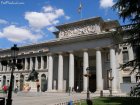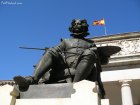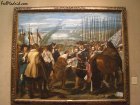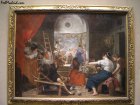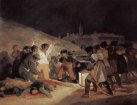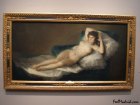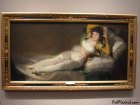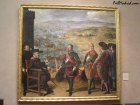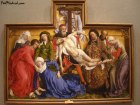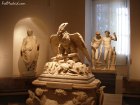 |
Home Info History Transportation Restaurants Top-10 Events Nightlife Walks Safety Photos
Wine  |
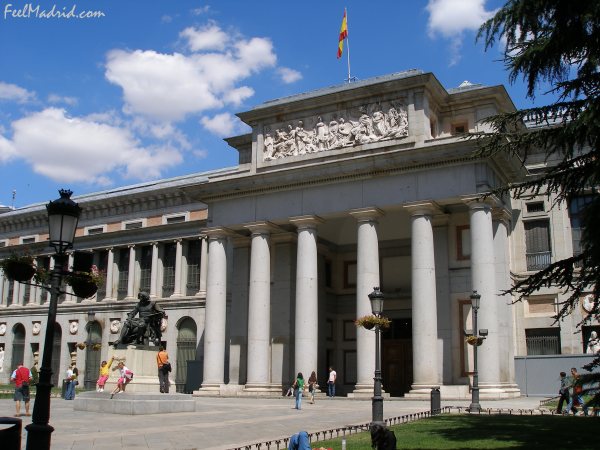
The Prado Museum (Museo del Prado) is the most prestigious museum in Madrid and probably the largest gallery of Classical paintings in the world. It was visited by more than 2,900,000 people in 2011. The construction of the building was ordered by Carlos III in 1785 to architect Juan de Villanueva. In 1819, during the reign of Fernando VII, more than 300 works from the Spanish monarchy were assembled here. Today the museum houses more than 8,000 paintings, but because of lack of space available less than 2,000 are on public display. The collection at El Prado includes the works of El Greco, Velázquez, Goya, Zurbarán, Ribera, Murillo, Bosch, and many others.
Spanish School.
The collection of Spanish painting ranges from 12th century Romanesque mural paintings to 19th century works by Goya.
The Spanish painters of the 17th century, known as the Siglo de Oro (Golden Century) are very well represented by El Greco, Diego de Velázquez, Francisco de Zurbarán (Still Life), José de Ribera (Martyrdom of San Felipe), and Murillo (The Good Shepherd).
El Greco (1541-1614).
Domenikos Theotokópoulos, best known as El Greco, was born in 1541 in the Greek island of Crete.
In 1567, he moved to Italy and spent the first part of his career in Venice and Rome.
El Greco arrived in Spain in 1577 and settled in Toledo where he lived until he died.
In the Prado Museum there are 34 paintings by El Greco, mostly portraits and works with religious themes.
Of particular interest are The Nobleman with a Hand on His Chest and The Adoration of the Shepherds.
Diego de Velázquez (1599-1660).
Diego de Velázquez was born in Seville in 1599.
In 1622 he moved to Madrid and became court painter of Felipe IV for the rest of his life.
Velázquez's paintings are characterized by his unique way in the use of perspective.
Major works of Velázquez include The Surrender of Breda, The Thread Spinners, and the masterpiece Las Meninas which is the most famous painting at the Prado Museum.
Room 12 at the Prado is exclusively dedicated to Velázquez.
Francisco de Goya (1746-1828).
With more than one hundred paintings, the Goya collection is by far the largest of all at the Prado.
His most famous paintings are The Naked Maja, The Clothed Maja, Carlos IV and his Family, as well as The Charge of the Mamelukes and The 3rd of May 1808 in Madrid: The Executions of Príncipe Pío Hill, where Goya successfully depicted the atrocities of the Peninsular War against Napoleon's troops.
Flemish and Dutch Schools.
From the 16th century the Netherlands were governed by the Spanish crown and this explains the wealth of Flemish paintings in the Prado.
Collections of paintings by early Dutch artists such as Rogier van der Weyden (The Deposition from the Cross), Bouts, and Memling, together with paintings by Hieronymous Bosch (The Garden of Delights) and Pieter Brueghel "The Elder" (The Triumph of Death) are displayed.
The collection of 17th century Flemish painting includes works by Peter Paul Rubens (The Three Graces, The Duke of Lerma), Anton van Dyck (Sir Endymion Porter and Van Dyck) and Brueghel.
Artemisia is the only work by Rembrandt owned by the Prado Museum.
Italian School.
Includes the period from the early Renaissance (Fra Angelico, Mantegna and Botticelli) to the 18th century (Tiepolo).
Of particular interest are the works by Raphael and the 16th century painters of the Venetian School such as Tintoretto and Veronese, as well as paintings by Titian (Carlos V at the Battle of Mühlberg, Bacchanal), Caravaggio (David and Goliath), and Gentileschi.
German School.
The collection of German painting is not very large but includes works from the 16th and 18th centuries.
Paintings by Albrecht Dürer (Self-portrait, Adam and Eve), Lucas Cranach, Baldung Grien, and the neo-classical Anton Raphael Mengs (María Luisa de Parma) are displayed.
French School.
Spanish-French relations during the 17th century and the acquisitions made by the Spanish kings, Felipe IV and Felipe V, form the basis of the Prado's collection of French painting which includes works by Nicolas Poussin (Parnassus, The Triumph of David), Claude Lorrain (Embarkment at Ostia), and Jean-Antoine Watteau (View of El Escorial).
Also of interest is the portrait of the King of France Louis XIV by Hyacinthe Rigaud.
Sculpture.
Brought mostly from Italy between the 16th and 19th centuries, the Museum's collection of classical sculptures includes Greek works from the Archaic to Hellenistic periods and a significant group of Roman carvings.
The 16th century bronze sculptures by Italians Leone and Pompeo Leoni (The Emperor Carlos V Subduing Rage, Bust of Carlos V) also form an important part of the Prado's sculpture collection.
The Treasure of Dauphin.
This remarkable collection of decorative art was inherited by Felipe V from his father Louis, the "Grand Dauphin", and it is located in the basement of the museum.
It comprises different types of jewels, golden and silver objects, pottery, etc.
Other.
In addition, the museum has its own souvenir store where you can buy postcards, prints, books, etc.
There is a cafeteria in the basement too.
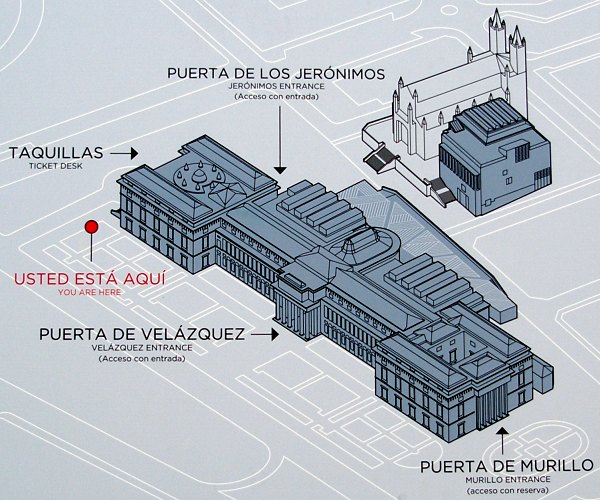
Visiting the Prado Museum.
Opening Times:
From Monday to Saturday: 10am – 8pm.
Sundays and holidays: 10am - 7pm
Museum Closed: January 1, May 1, and December 25.
Reduced opening hours (10am – 2pm): January 6, December 24 and 31.
The galleries are cleared 10 minutes before closing
Entrance fees:
General Admission: 12 Euros
Free entrance: Under 18.
Museo Nacional del Prado
Paseo del Prado, s/n.
28014 Madrid
Spain
Phone: (+34) 91 330 28 00
Fax: (+34) 91 330 28 56
Nearest metro stations: Banco de España and Atocha.
Website: http://www.museodelprado.es
Photos of the Prado Museum and Famous Paintings.
Accommodation, Lodging, Hotels, and cheap Hostels near the Prado Museum
Hotel Ritz ***** - Plaza de la Lealtad, 5. - Paseo del Prado, off Prado Museum.
Hotel Mora ** - Paseo del Prado, 32. - 200 meters from the Prado Museum.
Hostal Bruña - Calle Moratín, 50. Huertas, 200 meters off Prado Museum.
Hostal Parajas - Calle Fucar, 10. - Cheap accommodation 200 meters from Prado Museum. Single room 27-33 euros.
| Home Info History Transportation Restaurants Top-10 Events Nightlife Walks Safety Photos Wine Quiz Contact |
